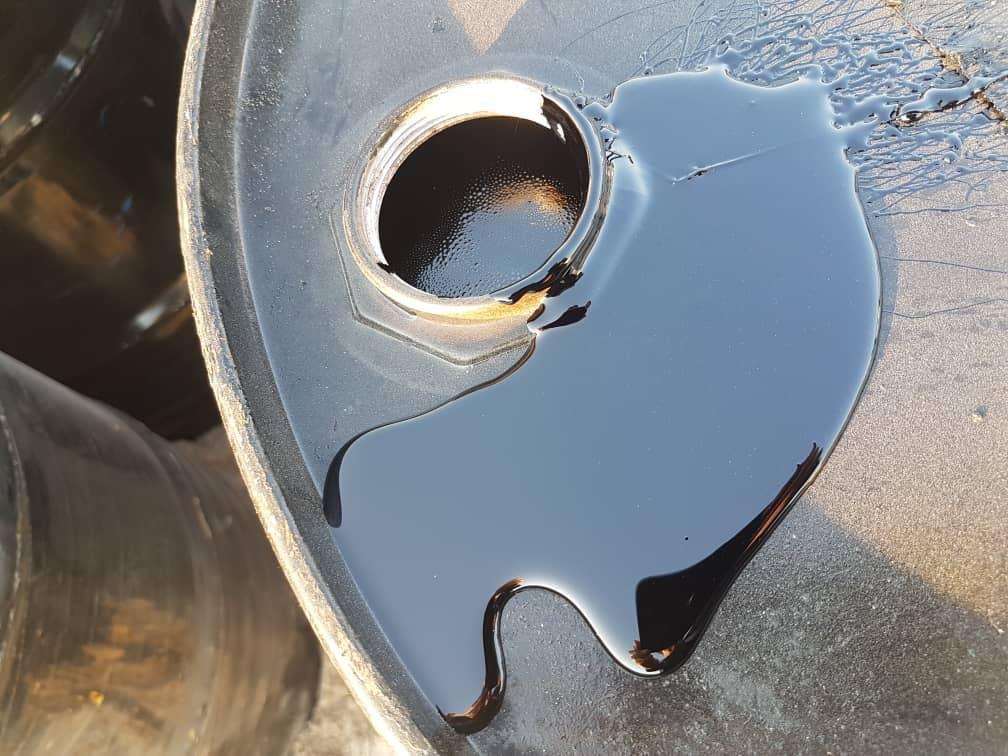Penetration Grade Bitumen
Penetration Grade Bitumen Description

Pentration / Paving Grade Bitumen is Bitumen classified using the penetration property. Penetration grading’s basic assumption is that the less viscous the asphalt, the deeper the needle will penetrate. Bitumen which is produced during the process of oxidation of vacuum bottom (the Bitumen production feedstock that derives from distillation tower residue in vacuum oil refineries) at bitumen production unit in a manner that its penetration point (kind of test to indicate the hardness of bitumen) in specified group is classified in different grade of Bitumen.
The penetration grading system was developed in the early 1900s to characterize the consistency of semi-solid asphalts. Penetration grading quantifies the following asphalt concrete characteristics:
Penetration Grade Bitumen or Paving Bitumen is commonly used in road surfacing, and some industrial applications. Additional processing yields other grades of bitumen products and their application.
Advantages of Penetration / Paving Grade bitumen
The test is done at 25° C (77° F), which is reasonably close to a typical pavement average temperature.
May also provide a better correlation with low-temperature asphalt binder properties than the viscosity test, which is performed at 60° C (140° F).
Temperature susceptibility (the change in asphalt binder rheology with temperature) can be determined by conducting the test at temperatures other than 25° C (77° F).
The test is quick and inexpensive. Therefore, it can easily be used in the field.
| Advantages | Disadvantages |
|---|---|
| The test is done at 25° C (77° F), which is reasonably close to a typical pavement average temperature. | The test is empirical and does not measure any fundamental engineering parameter such as viscosity. |
| May also provide a better correlation with low-temperature asphalt binder properties than the viscosity test, which is performed at 60° C (140° F). | Shear rate is variable and high during the test. Since asphalt binders typically behave as a non-Newtonian fluid at 25° C (77° F), this will affect test results. |
| Temperature susceptibility (the change in asphalt binder rheology with temperature) can be determined by conducting the test at temperatures other than 25° C (77° F). | Temperature susceptibility (the change in asphalt binder rheology with temperature) cannot be determined by a single test at 25° C (77° F). |
| The test is quick and inexpensive. Therefore, it can easily be used in the field. | The test does not provide information with which to establish mixing and compaction temperatures. |
Penetration Grade Bitumen Specification (AASHTO M 20 and ASTM D 946)
| Units | 40/50 | 60/70 | 80/100 | 100/120 | Test Methods | |
|---|---|---|---|---|---|---|
| Specific Gravity @25°C | – | 1.01-1.06 | 1.01-1.06 | 1.01-1.05 | 1.01-1.04 | ASTM D-70 |
| Penetration @25°C, 100gm, 5sec | 0.1MM | 40-50 | 60-70 | 80-100 | 100-120 | ASTM D-5 |
| Softening Point, Ring & Ball | °C | 52-60 | 49-56 | 45-52 | 42-49 | ASTM D-36 |
| Ductility @25°C, after TFOT, Min | CM | 100 | 100 | 100 | 100 | ASTM D-113 |
| Loss on Heating, Max | %Wt | 0.2 | 0.2 | 0.5 | 0.5 | ASTM D-6 |
| Drop in Penetration after Heating, Max | % | 20.0 | 20.0 | 20.0 | 20.0 | ASTM D-6 & D-5 |
| Flash Point Cleveland open cup, Min | °C | 250.0 | 250.0 | 232.0 | 250.0 | ASTM D-92 |
| Solubility in CS2, Min | %Wt | 99.5 | 99.5 | 99.5 | 99.5 | ASTM D-4 |
| Organic Matter Insoluble in CS2, Max | %Wt | 0.5 | 0.5 | 0.5 | 0.5 | ASTM D-4 |
| Sport Test | – | Negative | Negative | Negative | Negative | *A.A.S.H.O.T.102 |
Bitumen Specification European Standard (BS EN 12591)
| Units | 35-50 | 40-60 | 50-70 | 70-100 | 100-150 | Test Methods | |
|---|---|---|---|---|---|---|---|
| Penetration @25°C, 100gm, 5sec | 0.1MM | 35-50 | 40-60 | 50-70 | 70-100 | 100-150 | EN 1426 |
| Softening Point, Ring & Ball | °C | 50-58 | 48-56 | 46-54 | 43-51 | 39-47 | EN 1427 |
| Resistace to Hardening@163°C | |||||||
| – Change in mass, Max | %Wt | 0.5 | 0.5 | 0.5 | 0.8 | 0.8 | EN 12607-1 |
| – Retained Penetration, Min | 0.1MM | 53 | 50 | 50 | 46 | 43 | |
| – Softening point after hardinging, Min | °C | 52 | 49 | 48 | 45 | 41 | |
| Other Properties | |||||||
| Flash Point Cleveland open cup, Min | °C | 240 | 230 | 230 | 230 | 230 | EN ISO 2592 |
| Solubility in CS2, Min | %Wt | 99.0 | 99.0 | 99.0 | 99.0 | 99.0 | EN 12592 |
| Kinematic Viscocity @135°C, Min | mm2/S | 370 | 325 | 295 | 230 | 175 | EN 12595 |
Safety information
Bitumen have been usually flammable and may be kept away from fire or flame.
Carbon dioxide should be used as a fire suppressant.
Engineers or workers who work with bitumen ought to use leather gloves, safety eyeglasses and proper clothes and boots when they are operating with hot bitumen.
The temperature of hot bitumen is around 300 F and it’ll result in severe skin burns and eye injury.
HJ Oil Group supplies all Penetration Graded Bitumen Grades in correspondence to ASTM D946-09 and EN 12591-2009.
ASTM D946-09 Grades:
Bitumen 10/20
Bitumen 30/40
Bitumen 40/50
Bitumen 60/70
Bitumen 85/100
Bitumen 120/150
Bitumen 200/300
EN 12591-2009 Grades:
Bitumen 20/30
Bitumen Penetration Grade 30/45
Bitumen Penetration Grade 35/50
Bitumen Penetration Grade 40/60
Bitumen Penetration Grade 50/70
Bitumen Penetration Grade 70/100
Bitumen Penetration Grade 100/150
Bitumen Penetration Grade 160/220
